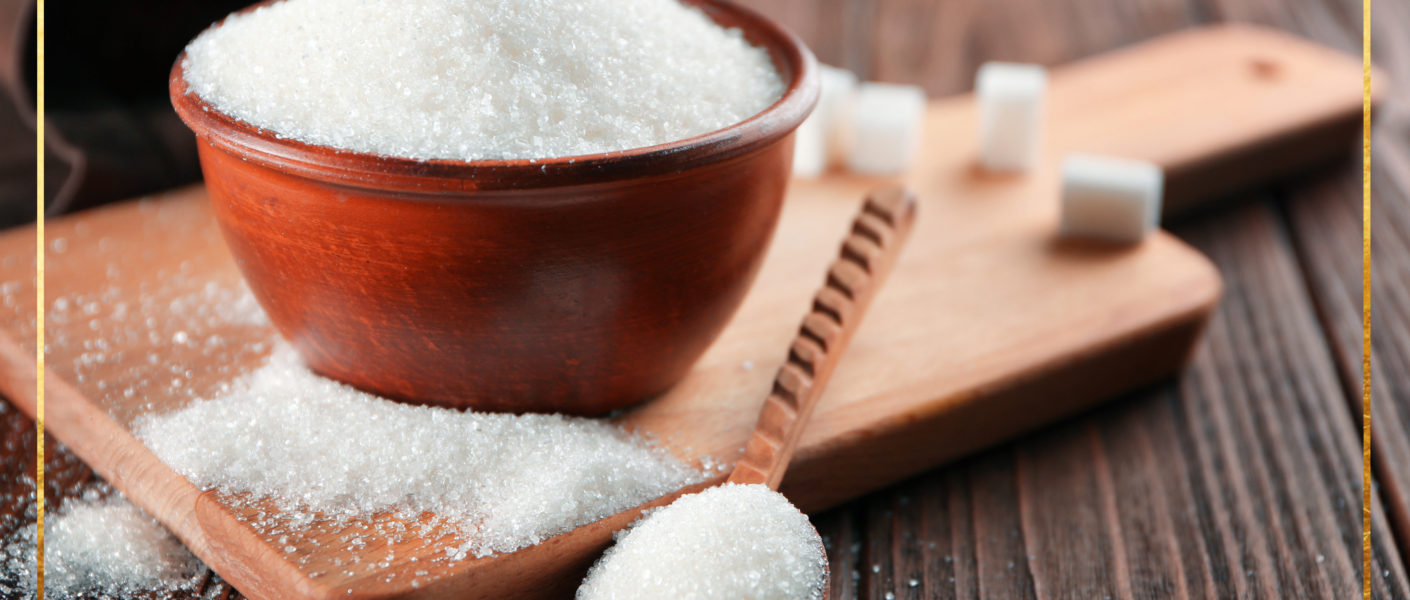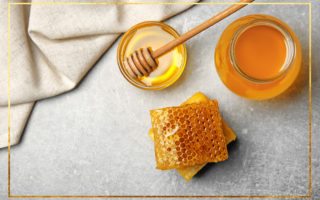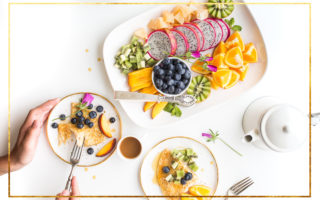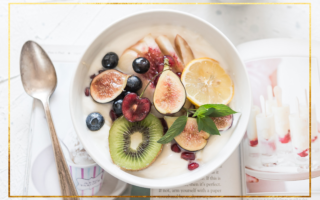Over-consumption of sugar is the primary cause of obesity.
Maybe you’re rolling your eyes right now, because you workout and watch your diet, and obesity is not on your mind.
How about this? Sugar is highly addictive, and increased intake can weaken your immune system.
Sugar also robs your body of essential minerals, and cancer cells feed off of sugar. Your liver, pancreas, skin, mood, and cholesterol are all affected by your sugar intake.
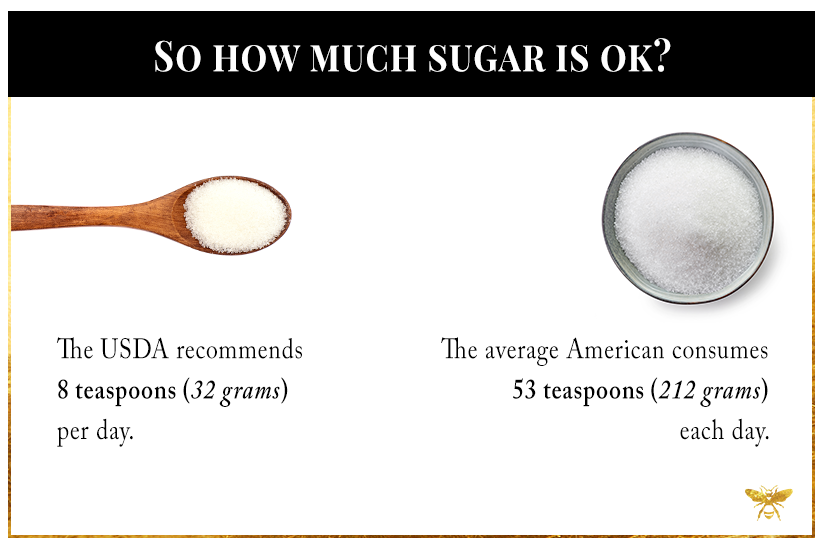
That’s more than 6x the recommended intake.
So how do we recommend reading nutrition labels? And how do you break the sugar habit? What is the difference between natural sugars, like in fruit, and added sugars? And just how bad is sugar?
You can click to scroll ahead, we’re going to cover:
- How Do You Read a Nutrition Label?
- A New Way to Read That Label
- Look For Foods Without Labels
- How Does Your Diet Measure Up?
- How to Break the Habit
- Naturally Occurring Sugar vs. Refined Sugar
- Why you Need to Kick Sugar to the Curb
- Don’t Give Up
How Do You Read a Nutrition Label?
When you pick up a package at the grocery store, how do you read the label?
Many of us start with the calorie content. After all, it’s huge and bold. Then we peruse on down to the grams of fat.
If you’re on the Keto diet, or diabetic, carbohydrates may be of interest to you. Depending on the day, you may look for “gluten free,” “Non-GMO,” “organic,” or “all-natural” before throwing the item in the cart or back on the shelf.
Very few people pay much attention to the grams of sugar, and added sugar, on the label. Even fewer people will read the ingredients to see where sugar falls in the mix.
If you’re thinking, “Ok, next time I’ll check the grams of sugar,” be aware – refined sugar hides in ingredients lists under 56 different names! Some labels use 3 or 4 different names for sugar!
A New Way to Read That Label
The next time you pick up a food item at the grocery store, check for grams of sugar, and more importantly, added sugar.
Natural sugar from fruit is welcome in your diet! Added sugar is not.
Choose a level of sugar you’re comfortable with. 12 grams in a snack or “dessert” item is a good starting point if the majority of your diet is healthy.
12 grams allows you almost 3 treats in a day.
If 12 grams sounds high for just one snack serving in a day, consider this:
- One can of Coke has 39 grams.
- 3 Oreo cookies contain 14 grams.
- One strawberry Pop-Tart has 15 grams.
- A tall Caramel Frappuccino with whipped cream has 44 grams.
Keep in mind that sugar lurks in unusual places – salad dressings, crackers, breads, sauces – and your daily intake might be much higher than you thought.
Next, let your eyes move down the label to the ingredient list. Is the list very long? Does it contain words you can’t pronounce or have never seen before? Is the shelf life of the product over a year long? Is sugar, or one of its aliases, close to the top? Put it back!
What are sugar’s aliases, you ask? Buckle up.
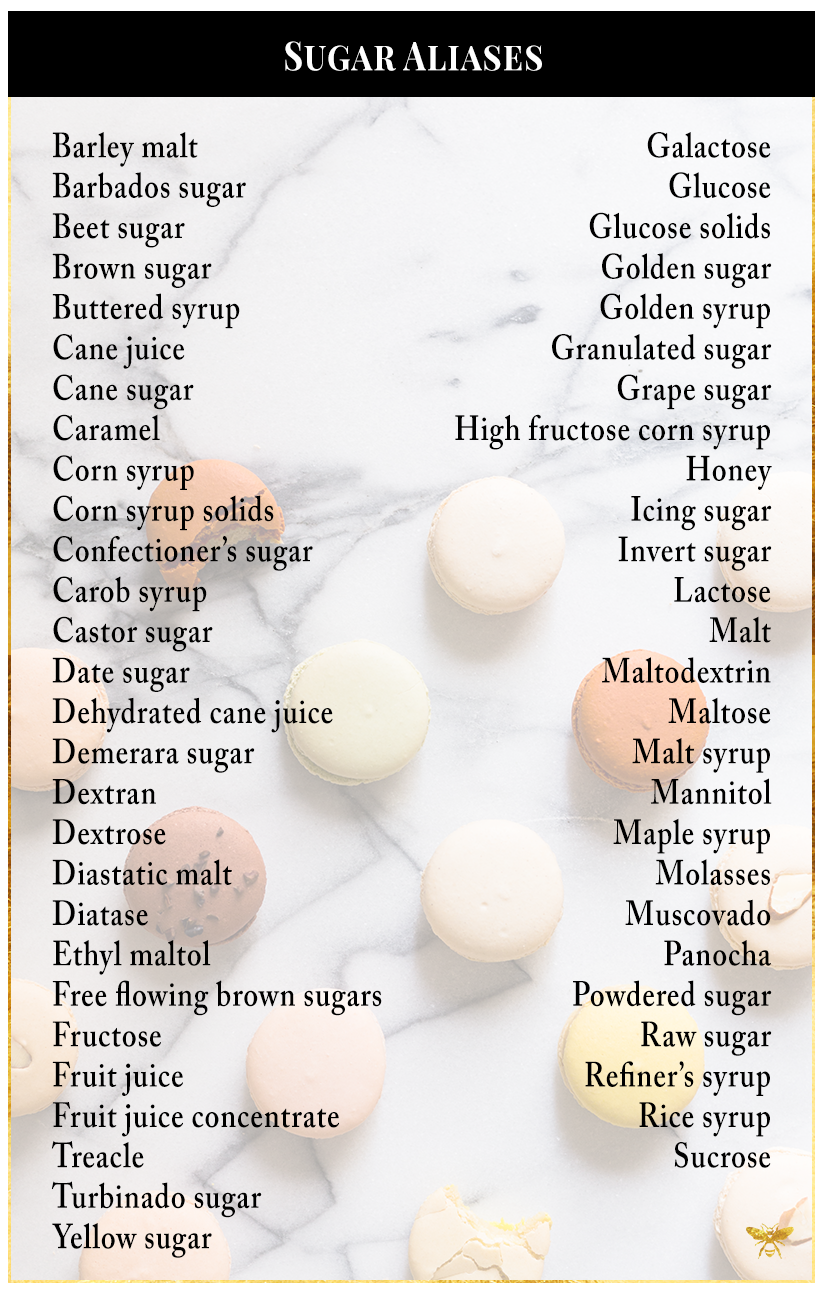
Many of these are intentionally misleading, masquerading as healthy alternatives to that addictive white powder.
And no, we don’t mean cocaine, even though the brain reacts similarly to both!
Look For Foods Without Labels
At this point, you may be feeling desperate in the grocery aisle.
You’ve put back your yogurt, coffee creamer, orange juice, favorite cereal, trail mix, granola bar, ice cream… is life even worth living? What exactly are you supposed to eat each day?
The answer is whole foods. Real food, born in nature.
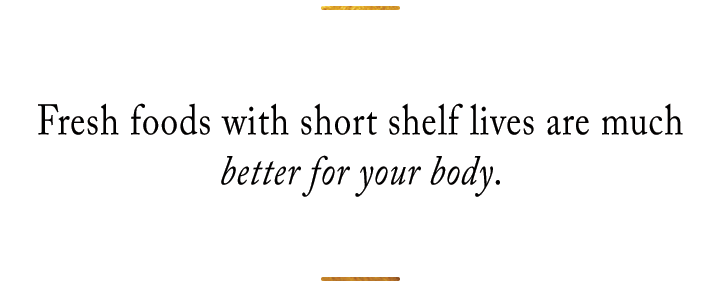
Go back to the front of the grocery store and stock your cart up in the produce section! Anything you purchase from the rest of the store should be minimal.
How Does Your Diet Measure Up?
Let’s walk through what may be a typical day of eating for you, and see how your sugar intake measures up.

Tips For A Nutrient-Dense Diet To Get You Started
Try these suggestions for a day of meals filled with real nutrients.
Breakfast: Eggs with spinach and onion is a great option. Fresh fruit smoothies with vegan protein also work.
Mid-morning snack: Could be raw nuts, Larabars, or an avocado.
Lunch: Should not be something that comes from a drive-thru or is only edible thanks to the microwave.
Afternoon snack: A serving of fresh fruit or vegetables is perfect for the 2 pm snack break.
Dinner: Another challenge as frozen pizzas and takeout fall to the wayside, but a salad loaded with nuts and veggies and a great vinaigrette, is what your body needs.
If you’re really craving dessert, try a spoonful of natural, no sugar added peanut butter, a cup of dessert tea, or some 80+% cacao dark chocolate.
How to Break the Habit
Hopefully you’re starting to realize just how much sugar is seeping into your diet through every choice you make throughout the day.
So what can you do about it?
We recommend a “cold turkey” approach, instantly removing as many sugars from your diet as possible. Much like ripping off that band-aid, it’s going to hurt.
Cravings can last for weeks, although they become less acute after a few days.
The upside? Your food is going to taste a lot better.
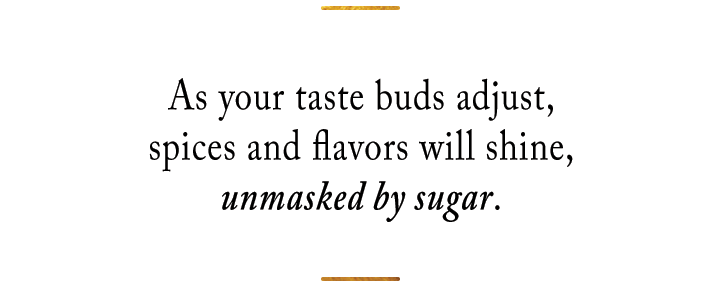
As cravings for sugar subside over time, your cravings for specific foods will, too. You may find that you throw away less food as you don’t indulge each craving as it comes.
Fresh fruits will start to taste very sweet, filling the void that dessert once left. Blueberries and raspberries make a great replacement for dessert – and are full of antioxidants.
You may not be quite ready for the cold turkey approach. That’s ok too. Start with small changes and work your way up.
Look for your biggest splurges each day, and/or the items that you look forward to most, and replace those first.
That afternoon Starbucks run may be the best part of your day, but try a flavored tea (sans sweetener or milk) instead. Does your favorite sandwich shop include a brownie with your lunch? Opt for an apple.
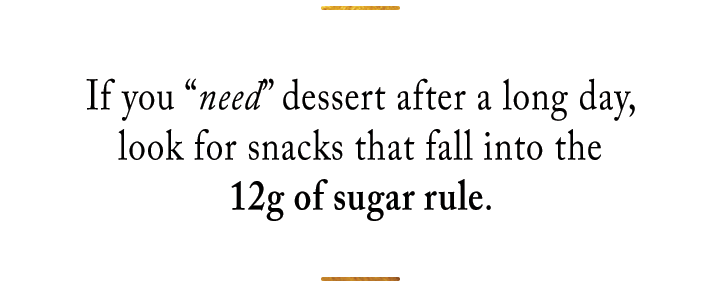
At first, you may spend a significant amount of time reading labels at the grocery store. Over time, this will decrease as you learn what types of products to avoid.
Don’t tempt yourself by perusing the cookie or ice cream aisles. And try not to fall into the artificial sweetener trap! “Sugar free” does not mean healthy.
If you have a crazy sweet tooth, here are some great, filling ideas for breakfast and/or dessert:
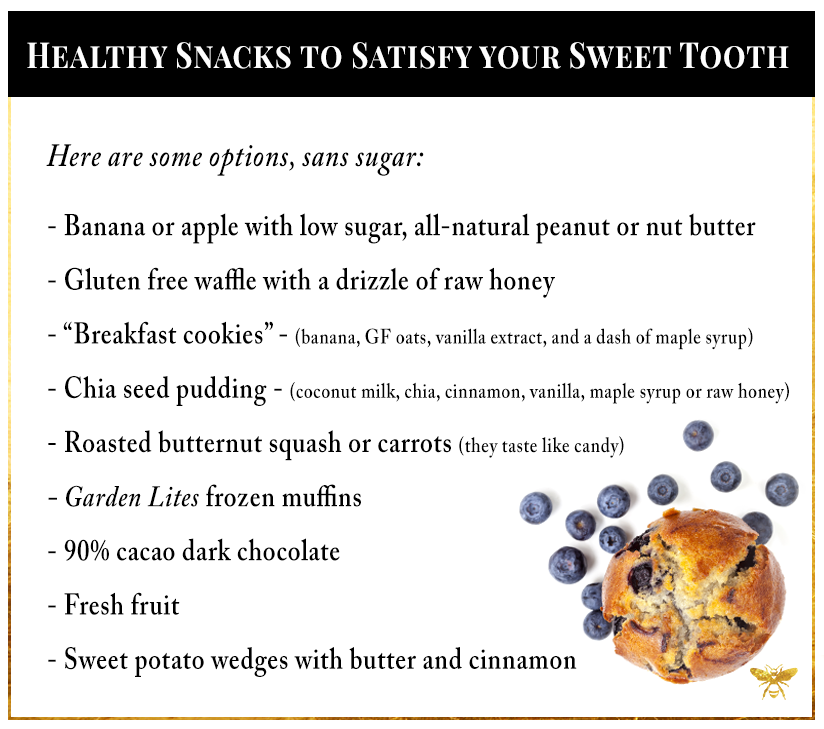
The goal is to change your approach to food, not to replace your splurge foods with artificially sweetened versions.
Naturally Occurring Sugar vs. Refined Sugar
So what is the difference between the naturally occurring sugar in fruit, dairy, and some vegetables – and the refined sugar added to our food?
The difference is that the fructose found in fruit is enrobed in fiber, which not only allows you to feel full, but is easily digested by all of the cells in your body.
Fruit, veggies, and dairy all have vitamins and nutrients that accompany their natural sugar and fiber, helping your body to function at its highest level.
Refined sugar is typically sucrose, a combination of glucose and fructose. Sucrose can only be processed by the liver, which seriously slows down your metabolism, as well as putting extra pressure on your liver. Sucrose and high-fructose corn syrup are converted to fat very quickly.
The foods that we are often choosing with lots of refined sugars – snack bars, cookies, candies – contain little to no vitamins and nutrients.
Why you Need to Kick Sugar to the Curb
Sugar causes and/or exacerbates a variety of health issues, making it an enemy we need to avoid.
So what are all of those indulged sugar cravings leading to?
- Tooth decay (and not just because it sits on your teeth and rots them). Sugar inhibits your body from absorbing essential minerals, weakening teeth and bones.
- Sugar weakens the immune system, making us more susceptible to illness.
- Sucrose builds up in the liver, turning to fat, and can long-term lead to disease.
- Increased glucose in the bloodstream is toxic, and signals the pancreas to release insulin. The highly elevated levels from sugary foods wreak havoc on the pancreas and insulin levels, leading to type II diabetes and obesity.
- All of that extra insulin released by the pancreas also promotes cell growth – including cancer cells. All of those extra cookies, cakes, and brownies can increase the risk of breast, colon, pancreatic, colorectal, and endometrial cancers.
- Sugar in your bloodstream can damage your skin’s collagen and elastin, making your skin prematurely wrinkled.
- “Sugar highs” and alternatively, “sugar lows” are very real – blood sugar and serotonin spikes and crashes affect your mood. Long-term, this can lead to anxiety and depression.
- Sugar can even affect your cholesterol, ultimately leading to heart disease.
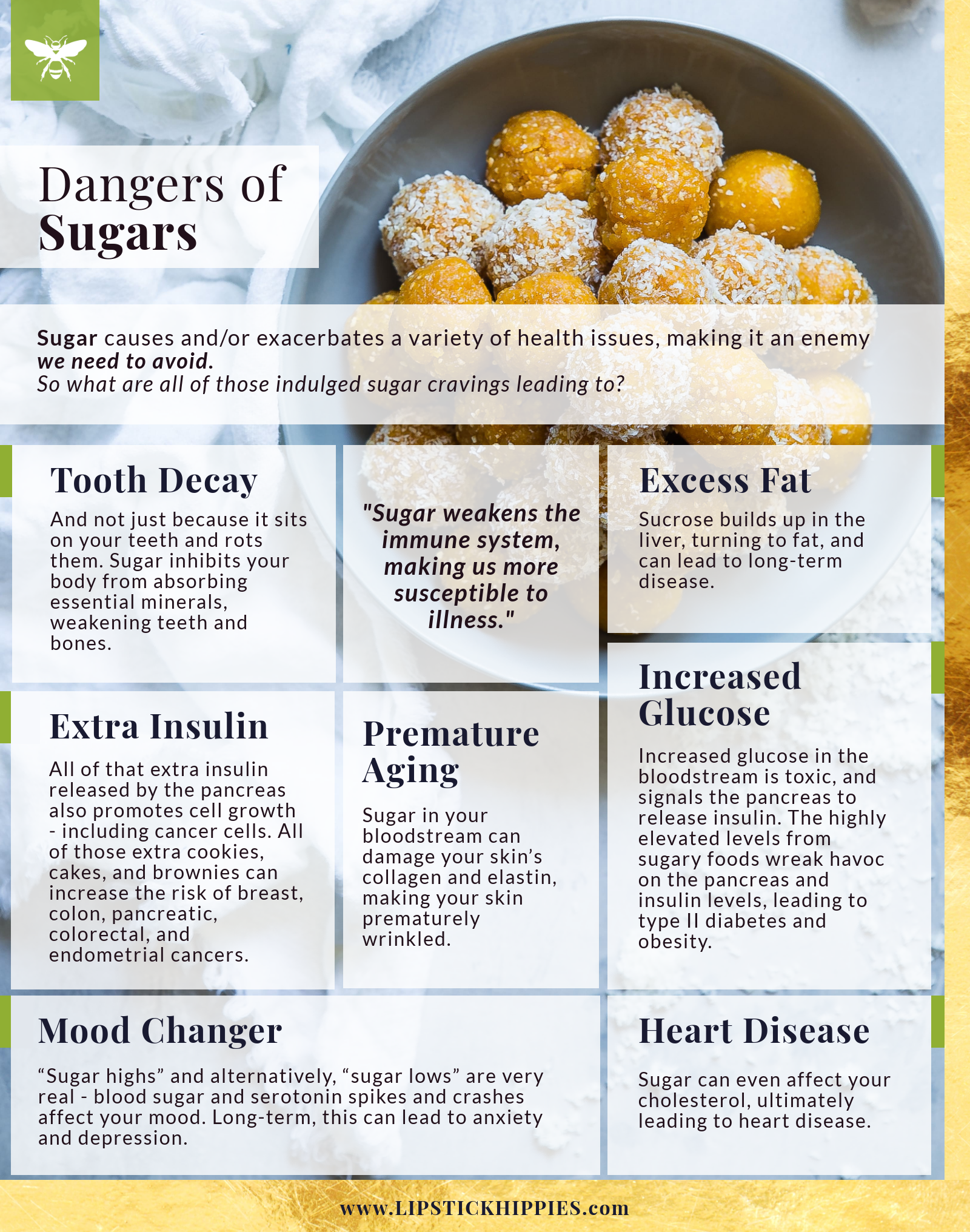
Don’t Give Up
There are days that you will cave and treat yourself to that fancy coffee, or an especially beautiful slice of birthday cake. That’s ok!
Our bodies are fully equipped to handle the occasional indulgent treat. Just be careful not to make it a habit.
Start your day with a savory, protein-filled breakfast that doesn’t inspire sugar cravings all day. Save any small treats for after lunch, while your body still has time to process them. Plan and eat a healthy dinner, and get to bed before you’re tempted to give in to any other cravings.
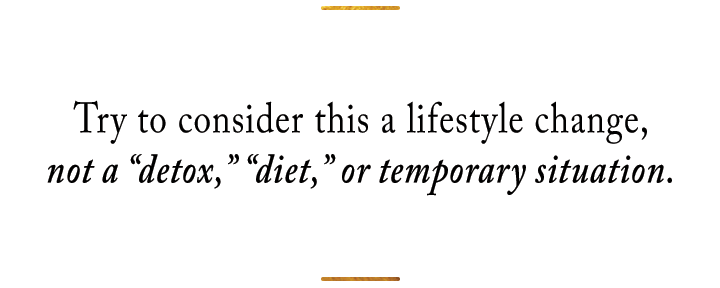
Remember that this is an investment in your health, and there will not be a time when consuming 200+g of sugar each day is acceptable again!
So enjoy your birthday with a slice of your favorite cake, but nourish your body with real foods on the daily!
What’s your daily sugar intake? Are you consuming more than you thought? Let us know in the comments!
Up Next: 13 Raw Honey Benefits That’ll Transform Your Health

